Step-by-step guide to assessing rumen function in beef cattle
For beef finishers, winter is often a time when a high level of starch is being fed to get animals finished as efficiently and profitably as possible.
This can be a risk factor for acidosis. Acidosis occurs when the rumen pH drops below 5.5 and can be as a result of an increasing amount of concentrates being fed.
When cattle have acidosis, appetites can be depressed and the rumen bacteria becomes affected due to excessive acid conditions. This not only reduces daily liveweight gains, but can also lead to extended finishing times and reduced grading results.
See also: Advice on using yeast, buffers or rumen conditioners
James Ireland, product manager with Agri-Lloyd, says when he conducts rumen audits on beef units across the UK, to assess how well the rumen is functioning, he often finds high levels of acidosis and high amounts of undigested grain in the manure samples, which can be costly for the farmer.
A rumen status audit, which is conducted over a 12-week period, can help assess whether a diet is working efficiently in order to maximise production and also to avoid health issues, such as acidosis.
In this simple step-by-step guide, Mr Ireland explains how to conduct rumen status audits on farm.
1. Gather farm data
The first thing is to get background information about what is happening on the farm. Information such as: stock numbers, daily liveweight gain, weight of animals, average grades (if selling deadweight) and housing area.
2. Observe the cows
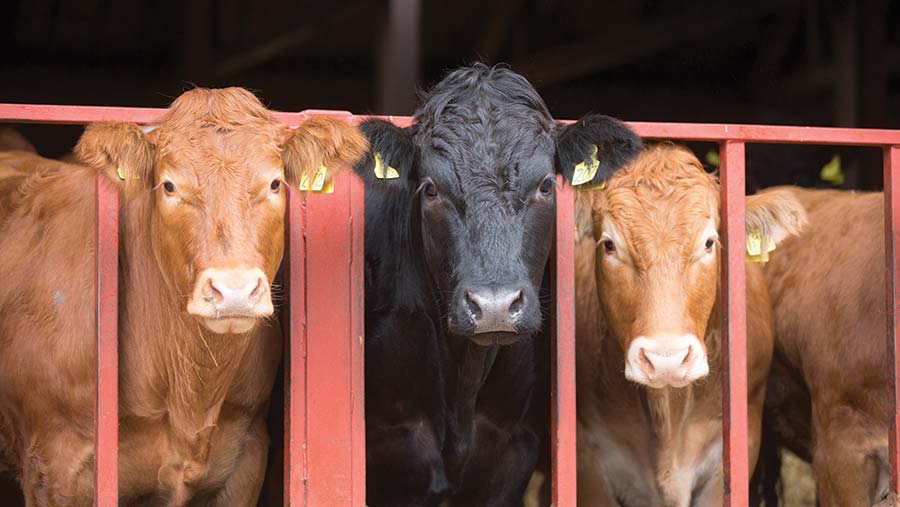
© Tim Scrivener
Observing cattle in the shed can tell you a lot about how well the animals are and how their diets are performing.
Ideally, you should be looking for 66% of cows ruminating at any one time in a shed.
Beef housing can make it harder to find tell-tale signs of acidosis, such as cud balls, compared to dairy cows housed in cubicles. However, if you see cud balls in the shed, then it’s likely acidosis is a problem.
Look for evidence of feed sorting. If sorting is going on then it means the cattle aren’t actually consuming the diet that is on paper.
If there’s a lot of groaning coming from the cattle, then it could be a sign there is an acidosis problem.
3. Take manure samples
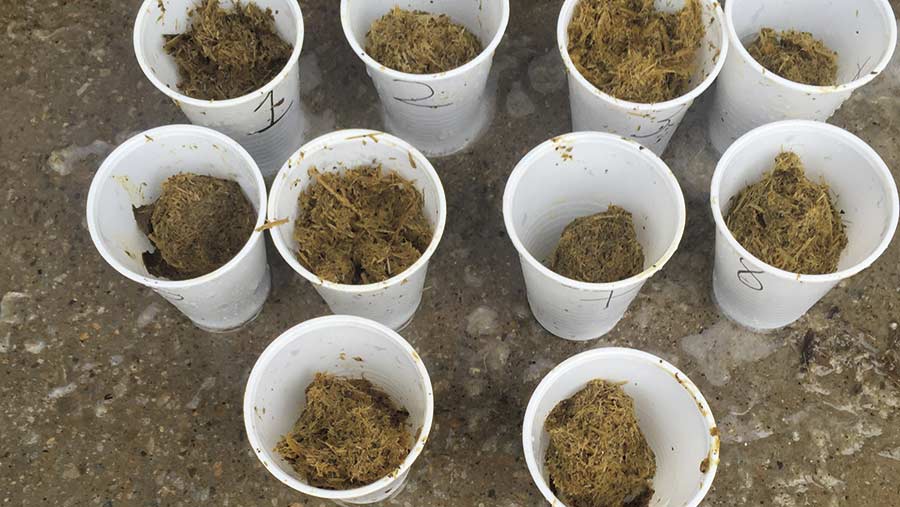
Take 10 representative samples of fresh manure. Each sample should be collected in plastic cups that are labelled 1-10.
4. Assess manure consistency
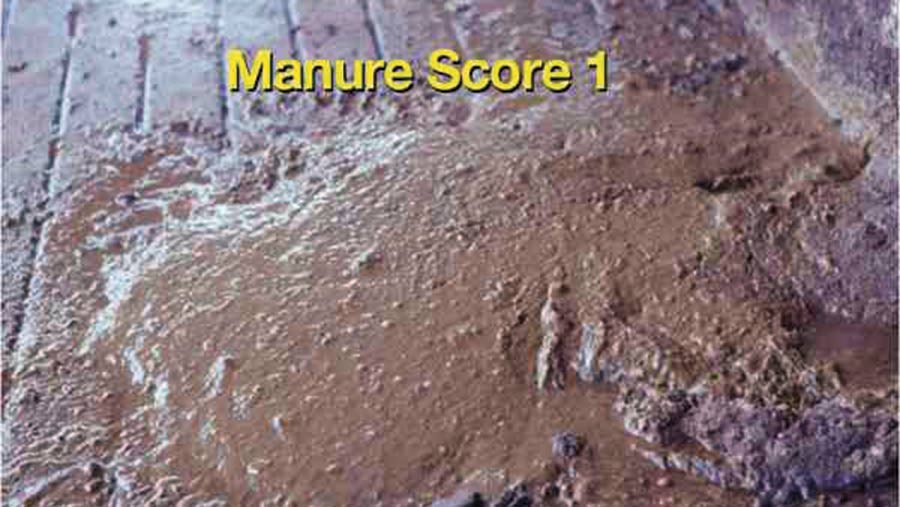
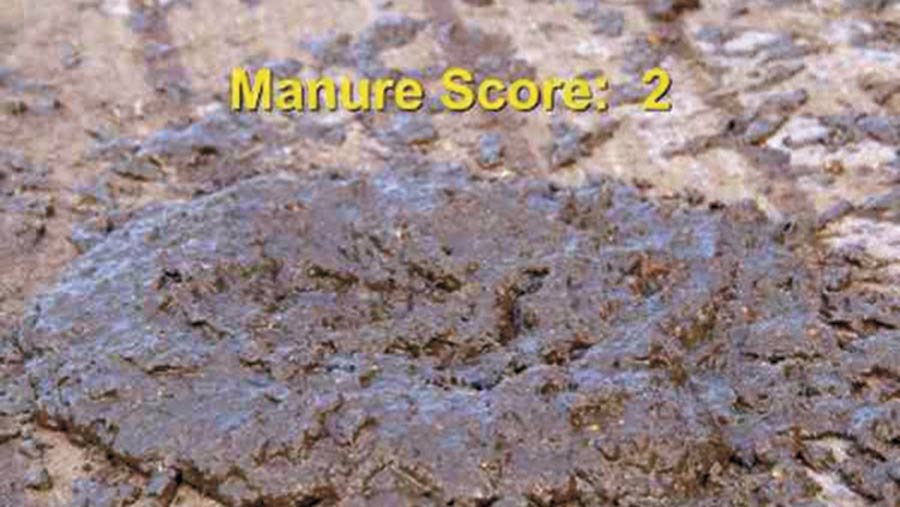
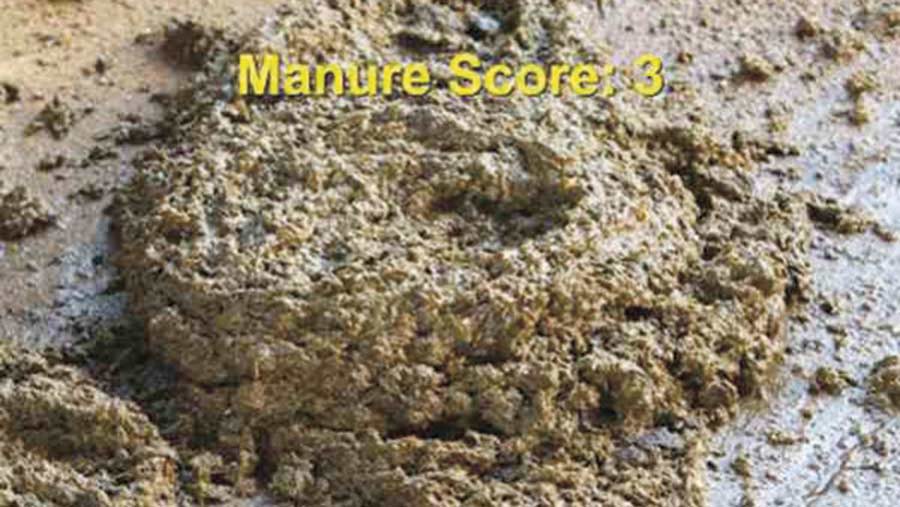
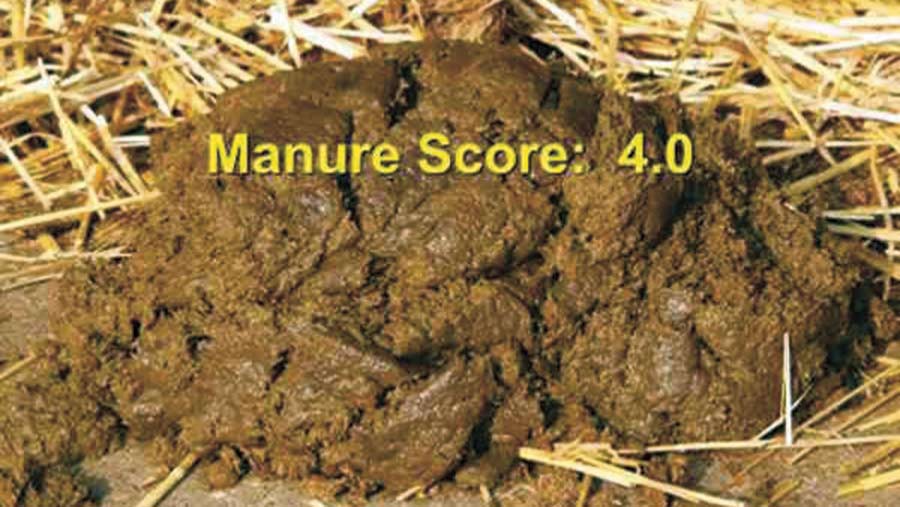
When collecting the samples of manure, record the consistency of the manure and score it on a scale of 1-5; 1 being like soup/water and 5 being dry and high in undigested fibre. The ideal is a score of 2-3.
5. Look for gas bubbles

Look at the manure and see if there are any gas bubbles. If there is any bubbling, then it is a sign of acidosis, which is a result of gas production from too much hind gut fermentation.
6. Weigh and wash manure
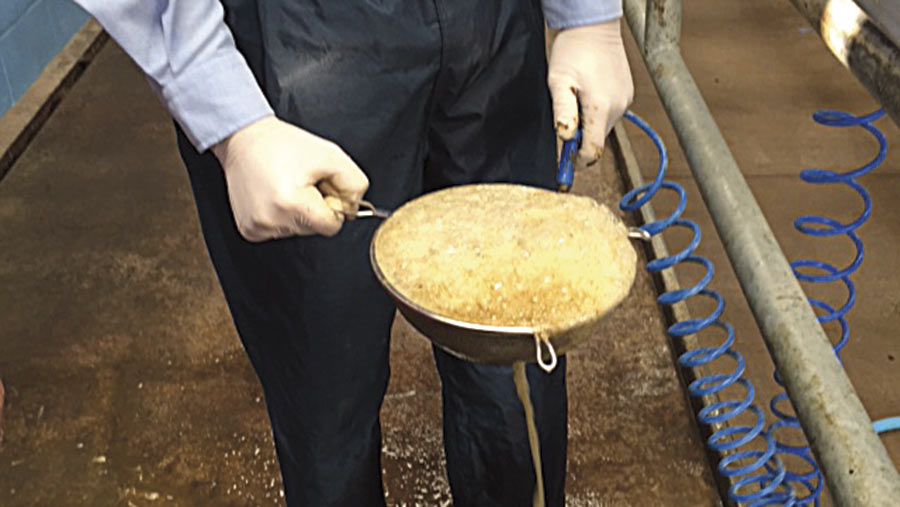
All samples should be weighed individually before they are washed through in a manure sieve.
Completely transfer each sample into a manure sieve, gently wash through the manure until the water coming out of the bottom of the sieve runs clear.
During washing, you are looking for any foaming, which is a sign of a high acid load.
7. Assess washed manure
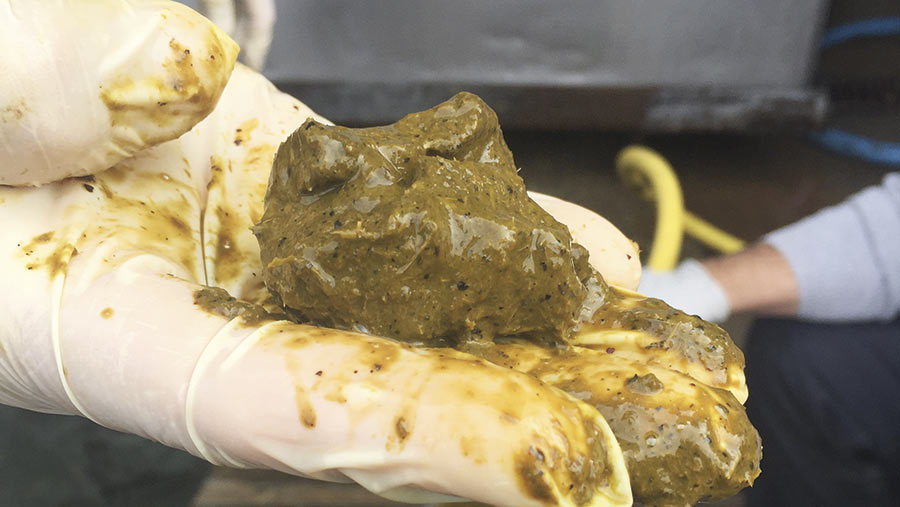
Assess the washed manure. Look out for small clay-like balls of manure. If you find any, then this is a sign of poor rumen function.
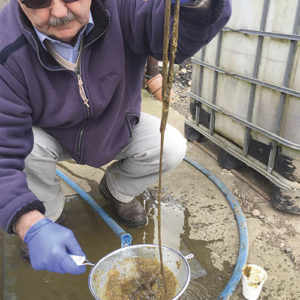
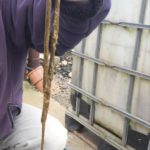
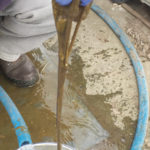
You are also looking for mucin casts, which look like sausage casings, they are shed out of the large intestine if too much acid is formed in the hind gut.
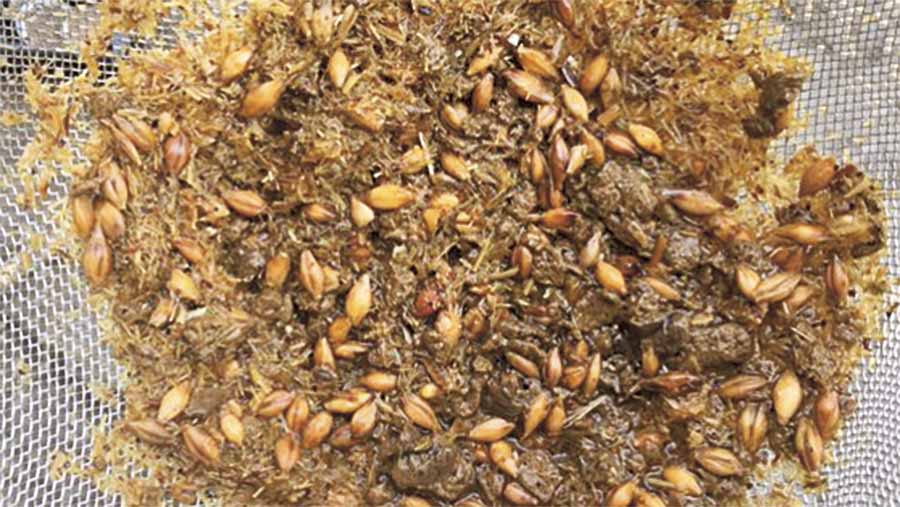
Ideally, when assessing manure, you should find no grain in the washed sample. If there is grain found, then it shows it’s not being digested.
This could be because the rumen is not working efficiently enough to digest all the grain because the rumen pH is too low, which affects the ability of the rumen microbes to break down the feed. Or it could be that it hasn’t been cracked properly.
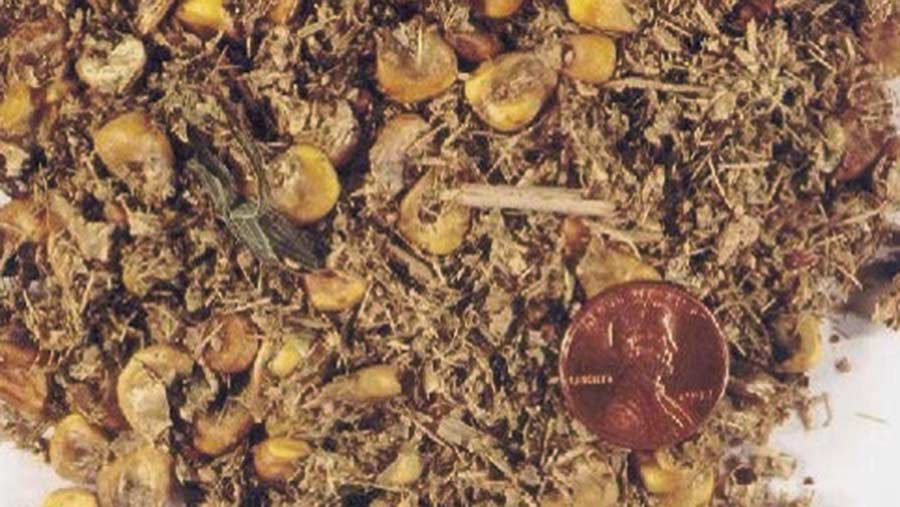
You also need to look for other undigested material in each sample. You should be looking for a cup 20-25% full of undigested material after washing, with no clear signs of any unaltered feed particles still present in the post washed sample.
Anything more than 25% means the rumen is not using what is being fed to the cattle, which is lost growth rate potential.
Once all that is done then you can weigh the manure again to get a pre-and post-washing percentage.
8. Next steps
If acidosis is a problem in the cattle, then it may be that the diet needs tweaking and a stabilised yeast product fed to help the rumen microbes digest feed.
Unlike live yeast, stabilised yeasts are produced in a factory under controlled conditions, where they undergo fermentation and produce metabolites. The stabilised yeast product is made up of these metabolites, which are a food source for the rumen microbes.
Cattle should then be reassessed six weeks later to evaluate the impact on the rumen function corrective measures, such as a change of diet or introduction of a stabilised yeast product has had. A final audit should then take place six to eight weeks later.
How to spot a cow ruminating
Cows will tend to ruminate for about eight hours a day. They tend to lie down and during rumination will be seen chewing their cud.
What are cud balls and how to detect them?
Cows with Sara will often drop their cud; cud balls are small balls of food which the cow has spat out. Cud balls are often found at the front of cubicles where the cow spits it out while lying down, they are harder to detect in loosed housed dairy units and beef units due to layout.
